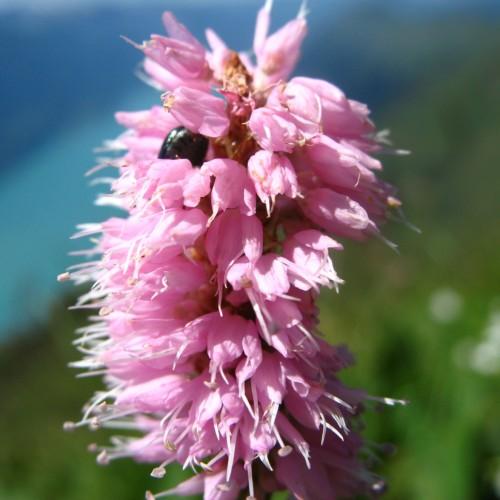
Meadow Bistort
Bistorta plumosa
Watering:
Minimal
Hardiness Zone:
Sun:
full sun,part shade
Leaf:
Yes
Growth Rate:
Low
Salt Tolerant:
Yes
Invasive:
Yes
Care Level:
Medium
watering
Beggarticks require regular watering, but should not be kept overly moist or waterlogged. Water the plants deeply every 5-7 days in the growing season (spring to summer). During dry periods or periods of high temperatures, water the plants twice a week. Beggarticks should be watered at the base of the plant using a watering can or a hose. Be sure to avoid splashing water onto the foliage as this can lead to fungal infections. In autumn, reduce watering to once every 2 weeks. During winter, reduce watering even further, water the plant fortnightly or when the top couple of inches of soil are dry.
sunlight
Beggarticks (Bidens tripartita) does best with 6-8 hours of direct sunlight a day. This plant prefers full sun during the morning hours when temperatures are cooler and there is less risk of leaf scorch due to the sun’s heat. It should have some light shade in the afternoon to protect it from the heat of the day. These plants should be placed in an area that gets at least a half day of sun, although increasing the sun exposure may increase the number of flowers produced.
pruning
Beggarticks should be pruned both regularly and when needed. Regular pruning should be done in spring, when the new growth starts. This should be done as part of a yearly maintenance program, focusing on removing dead stems, damaged branches, and any diseased plant material. After the regular pruning, another round should be done at the end of the summer. This second round should focus on removing any overly long branches, and any dead or damaged foliage. Pruning Beggarticks should be done leaving only 2-3 shoots at the base of the plant, and about 3 inches of stem from the original plant should remain. This will keep the plant evenly proportioned, and help ensure a bushy plant full of flowers. Finally, any deadheading of flowers should be done during the summer, and regularly throughout the growing season. This will help promote a longer-lasting and fuller flower display.
